Army
 While people might not know that today, October 14 was the day that Air Force test pilot, Chuck Yeager became the first person to break the sound barrier, many do know that it was Chuck Yeager who accomplished that feat. That was back in 1947, and it was an amazing accomplishment in speed flying…an activity common to test pilots, though not always safe or successful, and sometimes deadly. There was also another record that was broken on this day, but this one was back in 2012.
While people might not know that today, October 14 was the day that Air Force test pilot, Chuck Yeager became the first person to break the sound barrier, many do know that it was Chuck Yeager who accomplished that feat. That was back in 1947, and it was an amazing accomplishment in speed flying…an activity common to test pilots, though not always safe or successful, and sometimes deadly. There was also another record that was broken on this day, but this one was back in 2012.
Felix Baumgartner was born in Salzburg, Austria in 1969, and he started skydiving when he was 16 years old. He was also a paratrooper during his time in the Austrian Army. After his time in the Army, Felix decided that he needed that kind of excitement in his life, and so he went on to perform a series of daredevil feats, including becoming the first person to jump from one of the twin 1,483 foot high Petronas Towers in Kuala Lumpur, then the world’s tallest buildings, in 1999, and becoming the first person to skydive across the English Channel using a carbon-fiber wing, in 2003. His next record breaking jump was going to be his greatest feat, however, and it was five years in the making. It also involved a team of engineers, scientists, and aeronautic experts to custom design his equipment, including his pressurized space suit (intended to prevent his blood from boiling at high altitudes) and 6 foot wide, 2,900 pound, pressurized capsule. I’m sure that by now you are wondering why he would need such equipment, but I  assure you that he did. In 2010 the project, which was financed by energy drink company Red Bull, hit a roadblock when Baumgartner started having panic attacks while undergoing endurance tests in his pressurized suit and helmet. A sports psychologist eventually helped him learn to cope with his claustrophobia. I find it amazing that a dare devil would have such a problem as claustrophobia, but remember that he was a sky diver, so he was used to wide open spaces. This project required that he have a capsule that was attached to a helium balloon to take Baumgartner to an incredible height of 24 miles above the Earth.
assure you that he did. In 2010 the project, which was financed by energy drink company Red Bull, hit a roadblock when Baumgartner started having panic attacks while undergoing endurance tests in his pressurized suit and helmet. A sports psychologist eventually helped him learn to cope with his claustrophobia. I find it amazing that a dare devil would have such a problem as claustrophobia, but remember that he was a sky diver, so he was used to wide open spaces. This project required that he have a capsule that was attached to a helium balloon to take Baumgartner to an incredible height of 24 miles above the Earth.
At this point, I’m sure you are curious about the planned jump. On that morning, October 14, 2012, a 550 foot high helium balloon made of 40 acres of ultrathin plastic lifted the capsule carrying Baumgartner, nicknamed Fearless Felix by the crew at the launch site at Roswell International Air Center. He was going to jump from the capsule  at 127,852.4 feet and plunge to Earth. It would be the highest distance anyone had ever skydived from, and it would take nine minutes and eighteen seconds, of which four minutes and twenty seconds would be free fall…without an opened parachute…during which time he fell 119,431 feet. The prior record for high altitude skydiving was held by Joseph Kittinger, who jumped from an altitude of 102,800 feet in 1960. Kittinger was a former Air Force colonel, and was part of the team that helped prepare Baumgartner for his record breaking jump. Baumgartner’s top speed during that free fall was 843.6 miles per hour, or Mach 1.25, making Fearless Felix not only the record holder for the highest skydive, but now he was also the first person to break the sound barrier without the protection or propulsion of a vehicle. The capsule was equipped with cameras, to record the event, which was broadcast on the internet and on television, so it could be witnessed by millions of people world wide. After the jump, Fearless Felix landed safely in the desert near Roswell, New Mexico.
at 127,852.4 feet and plunge to Earth. It would be the highest distance anyone had ever skydived from, and it would take nine minutes and eighteen seconds, of which four minutes and twenty seconds would be free fall…without an opened parachute…during which time he fell 119,431 feet. The prior record for high altitude skydiving was held by Joseph Kittinger, who jumped from an altitude of 102,800 feet in 1960. Kittinger was a former Air Force colonel, and was part of the team that helped prepare Baumgartner for his record breaking jump. Baumgartner’s top speed during that free fall was 843.6 miles per hour, or Mach 1.25, making Fearless Felix not only the record holder for the highest skydive, but now he was also the first person to break the sound barrier without the protection or propulsion of a vehicle. The capsule was equipped with cameras, to record the event, which was broadcast on the internet and on television, so it could be witnessed by millions of people world wide. After the jump, Fearless Felix landed safely in the desert near Roswell, New Mexico.
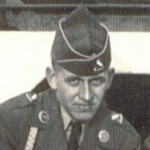 On June 25, 1950, when North Korea invaded South Korea, my uncle, Larry Byer found himself in the middle of what would become some of the hardest years of his life. Uncle Larry was an Army private during the Korean War. Korea was originally under the rule of the Japanese empire, but when it collapsed after World War II, the country was divided. The United Nations, using the United States as its main force, came to aid of South Korea. China, along with assistance from Soviet Union, came to aid of North Korea. North Korea was unhappy with the division of the country that took place after World War II. The global tensions of the Cold War that developed immediately afterwards didn’t help the situation either. Then the North Korean government decided
On June 25, 1950, when North Korea invaded South Korea, my uncle, Larry Byer found himself in the middle of what would become some of the hardest years of his life. Uncle Larry was an Army private during the Korean War. Korea was originally under the rule of the Japanese empire, but when it collapsed after World War II, the country was divided. The United Nations, using the United States as its main force, came to aid of South Korea. China, along with assistance from Soviet Union, came to aid of North Korea. North Korea was unhappy with the division of the country that took place after World War II. The global tensions of the Cold War that developed immediately afterwards didn’t help the situation either. Then the North Korean government decided  to get back the area they believed was actually theirs. In reality, Korea isn’t the only country ever to be divided, so had they simply accepted it, the problem might have been resolved right away, but they simply wouldn’t.
to get back the area they believed was actually theirs. In reality, Korea isn’t the only country ever to be divided, so had they simply accepted it, the problem might have been resolved right away, but they simply wouldn’t.
I understand why something had to be done with the country of Korea, because they had no government, but it doesn’t seem right to me to divide the country. Nevertheless, it was done that way, and in reality, that area has been volatile since that day. North Korea has tried to take over South Korea. They have also made many threats to the rest of the world. Their leader, Kim Jong-il, and now his son, Kim Jong-un, have both proven to be ruthless, and about half crazy. The rest of the world is  constantly trying to decide if we need to go in an blow them up, or try not to make them too angry. Time will tell, and it depends on Kim Jong-un.
constantly trying to decide if we need to go in an blow them up, or try not to make them too angry. Time will tell, and it depends on Kim Jong-un.
This was the world my Uncle Larry found himself in while he was a private in the Army. The North Koreans fought their battles in any underhanded way they could come up with. Their only goal was to win the war. They didn’t of course, and soon, my Uncle Larry came back home. I’m sure he was very happy to be back home. Spending any time in a crazy war like the Korean war would never be ideal in any way. I am just thankful that he made it home. Today is Uncle Larry’s birthday. He would have been 82 years old. Happy birthday in Heaven Uncle Larry. We love and miss you very much.
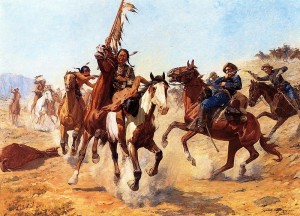 I don’t always think of myself as living in a historic area, although I should, because during the days of the Old West, at least, much history happened here. In fact, on this day, July 28, 1865, twenty year old Caspar Collins…a gutsy lieutenant from Dogwood Knob and Hillsboro, Ohio led 20 men to fight a battle against 1,000 to 3,000 Indians, just outside Platte Bridge Station, which was near Casper, Wyoming, where I live. The battle had been coming, and everyone knew it. The Lakota Sioux and the Cheyenne Indians had been attacking the United States Army for a couple of months now. The Indians had raided outposts and stagecoach stations over a wide area of Wyoming. On this day back in 1865, the Indians assembled their warriors and descended on Platte Bridge Station. The Platte River bridge was guarded by 120 men near the bridge, and another 28 soldiers guarded a wagon train a few miles away. The Indians killed 29 soldiers, while only losing 8 warriors in the raid.
I don’t always think of myself as living in a historic area, although I should, because during the days of the Old West, at least, much history happened here. In fact, on this day, July 28, 1865, twenty year old Caspar Collins…a gutsy lieutenant from Dogwood Knob and Hillsboro, Ohio led 20 men to fight a battle against 1,000 to 3,000 Indians, just outside Platte Bridge Station, which was near Casper, Wyoming, where I live. The battle had been coming, and everyone knew it. The Lakota Sioux and the Cheyenne Indians had been attacking the United States Army for a couple of months now. The Indians had raided outposts and stagecoach stations over a wide area of Wyoming. On this day back in 1865, the Indians assembled their warriors and descended on Platte Bridge Station. The Platte River bridge was guarded by 120 men near the bridge, and another 28 soldiers guarded a wagon train a few miles away. The Indians killed 29 soldiers, while only losing 8 warriors in the raid.
In reality, the Army was unprepared for this attack or the ones leading up to it. Colonel Thomas Moonlight had led a 500 Cavalry force out to seek out and punish the raiding Indians on May 26, 1865. He hung to minor Oglala leaders…Two Face and Black Foot. He left them hanging for days. I’m sure this infuriated the Indians. On June 3, the army began to worry that the 1,500 Lakota, mostly Brulé, and Arapaho who were living near Fort Laramie, might become hostile. So they decided to move them about 300 miles east to Fort Kearny in Nebraska. The Indians protested that Fort Kearny was in the territory of their traditional enemies, the Pawnee. The next day, near present day Morrill, Nebraska, most of the Indians refused to accompany the soldiers and  began crossing the North Platte River, assisted by Crazy Horse and a band of Oglalas on the other side. Attempting to stop them, Captain William D. Fouts and four soldiers were killed. Informed of the disaster, Moonlight departed Fort Laramie with 234 cavalry to pursue the Indians. He traveled so fast that many of his men had to turn back because their horses were spent. On June 17, near present day Harrison, Nebraska, the Lakota raided his horse herd and relieved him of most of his remaining horses. Moonlight and his men had to walk 60 miles back to Fort Laramie. He was severely criticized by his soldiers for being drunk and not setting a guard on his horses. On July 7, Moonlight was relieved of his command and mustered out of the army.
began crossing the North Platte River, assisted by Crazy Horse and a band of Oglalas on the other side. Attempting to stop them, Captain William D. Fouts and four soldiers were killed. Informed of the disaster, Moonlight departed Fort Laramie with 234 cavalry to pursue the Indians. He traveled so fast that many of his men had to turn back because their horses were spent. On June 17, near present day Harrison, Nebraska, the Lakota raided his horse herd and relieved him of most of his remaining horses. Moonlight and his men had to walk 60 miles back to Fort Laramie. He was severely criticized by his soldiers for being drunk and not setting a guard on his horses. On July 7, Moonlight was relieved of his command and mustered out of the army.
The Platte River bridge was a key crossing point of the North Platte River for wagon trains of emigrants traveling the Oregon and Bozeman Trails. The Indians wanted to stop traffic on the Bozeman Trail which led through the heart of their hunting territory. The bridge had been constructed in 1859 and was almost 1,000 feet long and 17 feet wide. On July 20, Indian leaders made their final decision to launch an attack against the bridge. The warriors gathered and set out southward from the mouth of Crazy Woman Creek on the Powder River. The Platte River Bridge was 115 miles south. The army was the largest they had ever seen. It was estimated to number 3,000 men. U.S. army accounts state that the wagons were forced into a hollow where they held out for four hours, using fire from Spencer rifles to repel assaults until a large group closed on foot and overwhelmed the defenders, killing all.
Then came the attack of Platte Bridge Station. The battle that left 29 men dead…including Lieutenant Caspar 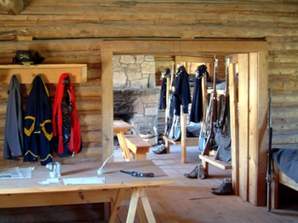 Collins, and at least 10 more men seriously injured. The battles before had involved maybe 1000 Indians. This battle was different…this one involved 3000. They were seriously outnumbered, but Lieutenant Caspar Collins went out to fight anyway. The day after the battle, the Indian army broke up into small groups and dispersed. A few remained near the Oregon Trail for raiding but most returned to their villages in the Powder River country for their summer buffalo hunt. Indians lacked the resources to keep an army in the field for an extended period of time. The Army officially renamed Platte Bridge Station to Fort Caspar to honor Collins, using his given name to differentiate the post from an existing fort in Colorado named after Collins’ father.
Collins, and at least 10 more men seriously injured. The battles before had involved maybe 1000 Indians. This battle was different…this one involved 3000. They were seriously outnumbered, but Lieutenant Caspar Collins went out to fight anyway. The day after the battle, the Indian army broke up into small groups and dispersed. A few remained near the Oregon Trail for raiding but most returned to their villages in the Powder River country for their summer buffalo hunt. Indians lacked the resources to keep an army in the field for an extended period of time. The Army officially renamed Platte Bridge Station to Fort Caspar to honor Collins, using his given name to differentiate the post from an existing fort in Colorado named after Collins’ father.
 Anyone who knows much about Nazi Germany, knows that Adolf Hitler was insane. His hatred for the Jewish people was nothing less that insanity, because he had no valid reason to hate them. Nevertheless, the Holocaust did happen. Hitler did kill between five and six million Jews during his reign of terror. Many people thought that the Jews were the only target Hitler had too, but that wasn’t so. Hitler wanted to kill anyone who annoyed, inconvenienced, or even remotely bothered him. On this day, July 8, 1943, upon the German army’s invasion of Pskov, 180 miles from Leningrad, Russia, the chief of the German army general staff, General Franz Halder, records in his diary Hitler’s plans for Moscow and Leningrad: “To dispose fully of their population, which otherwise we shall have to feed during the winter.” Hitler planned to level both cities, or at least kill everyone in them, because he didn’t want to have to feed the prisoners during the long winter months! And for no other reason. Most armies at least set up prisoner of war camps, which while not terribly humane, gave some semblance of an attempt to be humane. I know that everyone complains about how the United States treats prisoners of war, but there really is no comparison, when you view the way Hitler and some other terrible dictators treat prisoners of war. Humane treatment is a pipe dream for prisoners of dictators.
Anyone who knows much about Nazi Germany, knows that Adolf Hitler was insane. His hatred for the Jewish people was nothing less that insanity, because he had no valid reason to hate them. Nevertheless, the Holocaust did happen. Hitler did kill between five and six million Jews during his reign of terror. Many people thought that the Jews were the only target Hitler had too, but that wasn’t so. Hitler wanted to kill anyone who annoyed, inconvenienced, or even remotely bothered him. On this day, July 8, 1943, upon the German army’s invasion of Pskov, 180 miles from Leningrad, Russia, the chief of the German army general staff, General Franz Halder, records in his diary Hitler’s plans for Moscow and Leningrad: “To dispose fully of their population, which otherwise we shall have to feed during the winter.” Hitler planned to level both cities, or at least kill everyone in them, because he didn’t want to have to feed the prisoners during the long winter months! And for no other reason. Most armies at least set up prisoner of war camps, which while not terribly humane, gave some semblance of an attempt to be humane. I know that everyone complains about how the United States treats prisoners of war, but there really is no comparison, when you view the way Hitler and some other terrible dictators treat prisoners of war. Humane treatment is a pipe dream for prisoners of dictators.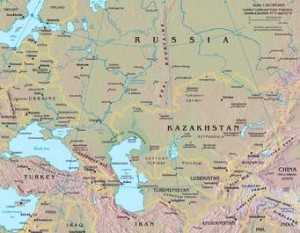
Hitler launched a massive invasion of the Soviet Union on June 22, with over 3 million men. He was highly successful, due in large part to a disorganized and unsuspecting Russian army. By July 8, they had captured 280,000 Soviet prisoners and almost 2,600 tanks were destroyed. The army was already a couple of hundred miles inside Soviet territory. Stalin was in a panic. He was so angry that he began executing generals who had failed to stop the invaders.
Halder, who was Hitler’s chief of staff, had been keeping a diary of the day-to-day decision making process. As time went on, Hitler became emboldened by his successes in Russia. Halder recorded that the “Fuhrer is firmly determined to level Moscow and Leningrad to the ground.” Halder also records the reality of Hitler’s underestimation of the Russian army’s numbers and the bitter fighting within Hitler’s own armies about strategy. Halder and some of the others wanted to make straight for the capital, Moscow. But Hitler wanted to meet up with Field Marshal Wilhelm Leeb’s army group, 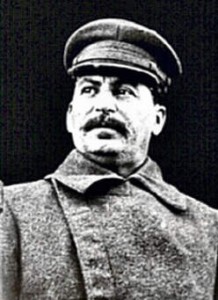 which was making its way toward Leningrad. And Hitler was, after all, in charge. But, the advantage Hitler had against the Soviets would not last very long. Winter was approaching and so was the advantage such conditions would give the Russians. The Russians were used to the severe Russian winters, and Hitler’s men were not. Like Napoleon before them, the Germans would soon find that they weren’t prepared for the Russian winter, and subsequent winters. And yet, Hitler thought he had learned from Napoleon. He ordered his troops to hold their ground. Which meant that during the Winter War, the German army was not able to pull back to more defensible positions. Consequently, the Russians were able to launch a series of counter-attacks during that first winter. These attacks cutoff some German forces, inflicted worse casualties than the Germans could inflict, but more importantly allowed the Russians to rebuild their army. The winter months proved to be just as detrimental for Hitler as they had for Napoleon. He was insane to even try such an attack.
which was making its way toward Leningrad. And Hitler was, after all, in charge. But, the advantage Hitler had against the Soviets would not last very long. Winter was approaching and so was the advantage such conditions would give the Russians. The Russians were used to the severe Russian winters, and Hitler’s men were not. Like Napoleon before them, the Germans would soon find that they weren’t prepared for the Russian winter, and subsequent winters. And yet, Hitler thought he had learned from Napoleon. He ordered his troops to hold their ground. Which meant that during the Winter War, the German army was not able to pull back to more defensible positions. Consequently, the Russians were able to launch a series of counter-attacks during that first winter. These attacks cutoff some German forces, inflicted worse casualties than the Germans could inflict, but more importantly allowed the Russians to rebuild their army. The winter months proved to be just as detrimental for Hitler as they had for Napoleon. He was insane to even try such an attack.
 I love that I have connected with so many family members over the past few years. It seems like each connection brings another connection, and then it keeps blossoming into more and more connections. Yesterday, I got an email from my cousin, Tracey Schumacher Inglimo, telling me of some information she came across in FamilySearch.Org. Some of it I already had, but there was quite a bit of it that I didn’t. It was like opening an early Christmas present. It was given to me for no reason other than to further the family tree for all of us. I seriously can’t tell you how big a blessing Tracey has become, and she continues to grow more and more important to my life every day. It was the connection with her that started all the open doors in the Schumacher family in the first place. From there, the Schumacher side of the family has grown to the point where I’m not sure just how many we know…and that is awesome!!
I love that I have connected with so many family members over the past few years. It seems like each connection brings another connection, and then it keeps blossoming into more and more connections. Yesterday, I got an email from my cousin, Tracey Schumacher Inglimo, telling me of some information she came across in FamilySearch.Org. Some of it I already had, but there was quite a bit of it that I didn’t. It was like opening an early Christmas present. It was given to me for no reason other than to further the family tree for all of us. I seriously can’t tell you how big a blessing Tracey has become, and she continues to grow more and more important to my life every day. It was the connection with her that started all the open doors in the Schumacher family in the first place. From there, the Schumacher side of the family has grown to the point where I’m not sure just how many we know…and that is awesome!!
As I said, some of the information was information that I already had, but some of it was new to me. One of the things I found most exciting is that Tracey had found, what I now believe to be the long lost picture of Christian Schumacher, who is my great great uncle, and the brother of my great grandfather, Carl Schumacher. According to my great aunt, Bertha Schumacher Hallgren, “Christian was a soldier (he joined very young, perhaps 20), straight and tall when he stood in his uniform, the photo of which Elsa and I used to love to look at when we were small. He served in the first World War, having stayed in the reserves  throughout the years, and fighting men became so few in the closing years of the conflict that Germany had to call up all the reserves, regardless of age. When the Russians entered Poland, he was captured and never heard from again. He had married a Polish girl and lived just inside the border of the two countries, operating a wholesale grocery business. They never had children and she did not continue writing after this tragedy.”
throughout the years, and fighting men became so few in the closing years of the conflict that Germany had to call up all the reserves, regardless of age. When the Russians entered Poland, he was captured and never heard from again. He had married a Polish girl and lived just inside the border of the two countries, operating a wholesale grocery business. They never had children and she did not continue writing after this tragedy.”
It is my hope that the picture Tracey found online is the same one Aunt Bertha mentioned in her story. It had seemed all but lost, and to find it among the things Tracey had found excited me beyond measure, as I know it will for all the other family members who have been hoping to see it. It is exactly what was described to me, and I know that there are others in the family who have seen it, so I hope they will be able to confirm that is the one they had seen.
I have found, as I have taken this journey of discovery to find other family members and more information on our history, that two heads…or ten, are better than one. They are far better, in fact. We all tend to look different places, and look for different information, and yet before you know it, the information found by one turns out to be the information that someone else was searching for. I guess I would have to say that my main reason for connecting with family is the family…for sure, but finding out so much more about the family is definitely a plus. So, today I want to thank Tracey for giving me and the rest of the family such an amazing gift. We all love you very much!!
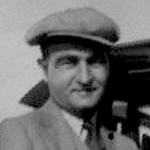 My Great Uncle John Clark Spare, who was my Great Aunt Mina Schumacher’s husband, had a lengthy career in the Army, that began when he enlisted in the North Dakota National Guard on June 30, 1916 at the tender young age of 17 years. At that time he was assigned to the Rio Grande River Border Patrol along the United States-Mexican Border, at Mercedes, Texas. In all, he served off and on from 1916 to 1943. When he wasn’t off fighting in wars, he was able to receive training in the Highway Engineering branch of Civil Engineering at Iowa State College. Following his education, he was assigned to field work, which is where I believe he began his initial association with the Indian tribes in the area, and would eventually change his life forever.
My Great Uncle John Clark Spare, who was my Great Aunt Mina Schumacher’s husband, had a lengthy career in the Army, that began when he enlisted in the North Dakota National Guard on June 30, 1916 at the tender young age of 17 years. At that time he was assigned to the Rio Grande River Border Patrol along the United States-Mexican Border, at Mercedes, Texas. In all, he served off and on from 1916 to 1943. When he wasn’t off fighting in wars, he was able to receive training in the Highway Engineering branch of Civil Engineering at Iowa State College. Following his education, he was assigned to field work, which is where I believe he began his initial association with the Indian tribes in the area, and would eventually change his life forever.
However that may have happened, John did end up being considered a person the tribes would listen to, and because of that, he was invited on November 11, 1936 to the Standing Rock Indian Reservation near Cannonball to give a speech at the American Legion Post Rally. Later that day, an Indian named White Eagle told him that an old Indian named Walking Cloud liked his speech very much and wanted to meet him. As it turned out, Walking Cloud had recently lost his son. He wanted to adopt John in his place…quite an honor. Over the remainder of that year and into the next, Walking Cloud and his wife, Mary visited the Spare home frequently. I would guess that they were getting to know each other better.
The ceremony was set for July 4, 1937 at Cannonball, during the first celebration of the Sundance since it was abolished in 1892 because the government felt the ritual was too torturous. For those who don’t know, the ritual entailed raising a huge pole with leather thongs tied to the top…two for each dancer. Incisions were made in two places on the braves chests and the ends of the thongs knotted into them. The dancers then danced around the pole until the thongs ripped from their chest, as a way of displaying their bravery. The Sundance was able to be revived in 1937, because most of the older Indians had died, and the younger ones weren’t very interested in having the torturous dance kept as part of the ceremony after all 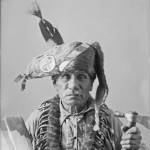 that time.
that time.
John Clark Spare was made Walking Cloud’s son during that ceremony, and given a Chief’s headdress made with genuine eagle feathers, which would be impossible now. Attached to the headdress was a long trailer of brilliant feathers running from the base of the neck to the ground. Trailers were worn by chiefs only on special occasions, Mina had fashioned breeches and a coat of pure white leather for him. Her work was exquisite, especially the bead work that covered most of the garment. After his adoption, John studied Indian lore more than before, and the collecting of Indian artifacts became his beloved hobby.
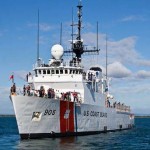
 The USCGC Spencer (WMEC-905) is a U S Coast Guard medium endurance cutter. It was named after my 5th cousin 5 times removed, John Canfield Spencer. He was born January 8, 1788 in Hudson, New York, and died May 18, 1855 in Albany, New York. During the War of 1812, he served in the U S Army where he was appointed the brigade judge advocate general for the northern frontier. John was the 17th Secretary of War from October 12, 1841 to March 4, 1843 and the 16th Secretary of the Treasurer from March 8, 1843 to May 2, 1844, under President John Tyler. As one of few northerners in an administration dominated by southern interests, John found it was becoming increasingly difficult to serve in his cabinet post, so he resigned as Treasury Secretary in May of 1844.
The USCGC Spencer (WMEC-905) is a U S Coast Guard medium endurance cutter. It was named after my 5th cousin 5 times removed, John Canfield Spencer. He was born January 8, 1788 in Hudson, New York, and died May 18, 1855 in Albany, New York. During the War of 1812, he served in the U S Army where he was appointed the brigade judge advocate general for the northern frontier. John was the 17th Secretary of War from October 12, 1841 to March 4, 1843 and the 16th Secretary of the Treasurer from March 8, 1843 to May 2, 1844, under President John Tyler. As one of few northerners in an administration dominated by southern interests, John found it was becoming increasingly difficult to serve in his cabinet post, so he resigned as Treasury Secretary in May of 1844.
WMEC-905 is the third cutter to serve the United States bearing the name “Spencer”. The history of Spencer started in 1843 when the original Spencer was commissioned to serve in the Revenue Cutter Service. An Iron hulled steamer, she served as a lightship off Hampton Roads, Virginia until 1848. The second cutter to carry the name Spencer was hull number W-36, commissioned in 1937. At a length of 327 feet, she first started service as a search and rescue unit patrolling Alaska’s fishing grounds. After the United States entered WWII, the Coast Guard temporarily became part of the US Navy. Spencer saw significant combat action in both the Atlantic and Pacific theaters. In the “Battle of the Atlantic”, Spencer acted as a convoy escort and hunted German submarines, sinking the U-225 and the U-175 in 1944. In late 1944, Spencer reported to the Navy’s Seventh (Pacific) Fleet as a Communications Command Ship. There she was credited with taking part in numerous amphibious invasions including Luzon and Palawan in the Philippines.
After the war, Spencer returned to her Coast Guard duties serving at an Atlantic Ocean Station. Here she provided navigational assistance for the fledgling trans-Atlantic air industry and more importantly, acted as a search and rescue platform for both airplanes and ships. In January 1969, Spencer returned to combat duty off the Coast of Vietnam. For ten months, she provided surveillance to prevent troops and supplies from getting into South Vietnam. In November 1969, Spencer returned to the United States to continue her peace time mission of ocean station keeping. The second Spencer served the nation for more then 37 years and when decommissioned in 1974, she was the most decorated cutter in the Coast Guard’s fleet.
The Spencer of today was commissioned into service on 28th of June 1986. She is credited for confiscating over 46,000 pounds of marijuana and 8800 pounds of cocaine. In 1991 she towed a disabled U.S. Navy frigate, twice her size, to safety, and participated in the search for a missing Air National Guard paratrooper during the “Perfect Storm”. In early 1996, she responded to the Alas Nacionales plane crash off the coastal waters of the Dominican 
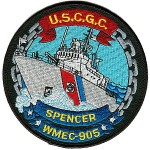 Republic in which 189 people were killed. When the fishing vessel Lady of Grace became disabled during a severe storm in November 1997, Spencer was there to save the crew and tow the vessel to safety. In 1999, Spencer was the on-scene commander for the crash of Egypt Air Flight 990 off Nantucket, controlling both U S Navy and Coast Guard assets in search and recovery efforts. In 2005, Spencer was an initial responder during Hurricane Katrina.
Republic in which 189 people were killed. When the fishing vessel Lady of Grace became disabled during a severe storm in November 1997, Spencer was there to save the crew and tow the vessel to safety. In 1999, Spencer was the on-scene commander for the crash of Egypt Air Flight 990 off Nantucket, controlling both U S Navy and Coast Guard assets in search and recovery efforts. In 2005, Spencer was an initial responder during Hurricane Katrina.
I would like to thank TxHwy105 and Len Eagleburger on Ancestry.com for providing the Spencer historical information and the US Coast Guard site for photos of the Spencer.
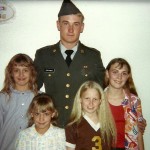 After his graduation from high school, my brother-in-law, Ron, decided to join the Army. His plan was pretty much to spend just the three years necessary to pay for his college education, but after he was honorably discharged and back home, the Persian Gulf War began in 1990, and he would be recalled into active service to fight over there for a time. It was a hard time for our family. The concern over his safety as a boots on the ground soldier, was very hard to take. You always hope you don’t have to send a loved one into war, but he served with honor and returned to us healthy and in one piece, so we were very thankful.
After his graduation from high school, my brother-in-law, Ron, decided to join the Army. His plan was pretty much to spend just the three years necessary to pay for his college education, but after he was honorably discharged and back home, the Persian Gulf War began in 1990, and he would be recalled into active service to fight over there for a time. It was a hard time for our family. The concern over his safety as a boots on the ground soldier, was very hard to take. You always hope you don’t have to send a loved one into war, but he served with honor and returned to us healthy and in one piece, so we were very thankful.
I remember when Ron was leaving, we had a get together to say good bye, and we took many pictures to keep him close to us in spirit, and tried to keep it light for Ron’s sake. One picture that I especially loved was of Ron with his 4 nieces…Uncle Ron’s Girls. He was not so many years older than my own daughters or nieces and nephew, that he totally felt like an uncle, but rather like an older brother. We spent a lot of time out at their house when my girls, Corrie and Amy were little, so they were very close to their uncle, as were my nieces Machelle and Susan.
I suppose, that is why the girls all hated to see him leave so badly. They were, maybe, too young to fully grasp what it meant to be at war, but they understood what it meant to have their uncle move away. It was like tearing a part of their heart out. We all felt the same way, but everyone had to put on a brave face and a smile, because he had to go and there was nothing we could do to stop that.
It has been about 21 years since Ron first went away to war, and he is a successful mechanic, happily married to a wonderful girl, who we all love, with 3 children, a son-in-law, and a new grandson. We are very proud of his accomplishments and especially proud of his service to his country. As far as his “girls” are concerned…well, they still think the world of their uncle who still seems more like an older brother than an uncle, and they will always be Uncle Ron’s Girls.

